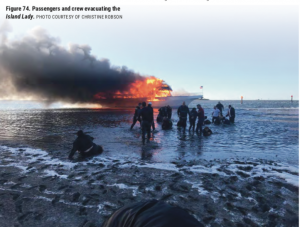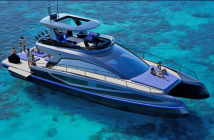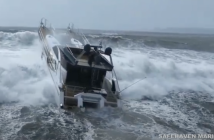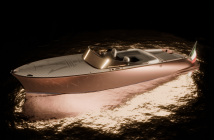
The National Transportation Safety Board just released its Safer Seas Digest 2018: Lessons Learned from Marine Accident Investigations, and it has some interesting lessons for those of us who go cruising on recreational boats. It’s a summary of 30 marine accidents, including collisions with fixed objects, sinkings, fires, floodings, groundings and other vessel damage, involving vessels from recreational boats to passenger liners.
The safety issues include: High-water/high-current conditions, watertight integrity, training for emergencies, remote emergency shutdowns, ice accumulation, mooring in strong winds, identifying navigation hazards and fixed ventilation openings.
As in the past, towing vessels/barges topped the list of vessels covered in the digest, with 12 out of the 30 investigated. Commercial fishing vessels were next, with seven.
In releasing the report, Robert L. Sumwalt III, the NTSB chairman, said that “with every investigation we conduct the lessons that we learn can prevent future losses – when marine stakeholders at all levels of the industry apply these lessons.”
You can download the 84-page report below. (You also might want to note the difference between a collision and an allision, mentioned in the report. A vessel collides with another moving vessel. A vessel allides with a fixed object.) If you have time, pull up your favorite chair and thumb through some of the reports; they’re thorough, conclusive and often chilling. Two caught my attention:
On page 36, the NTSB recounts a fire on board Best Revenge 5, a 58-foot sailing catamaran, on the night of July 11, 2017, at a dock in Falmouth, Massachusetts (see top picture). The captain and mate escaped the fire, which started at 1:30 a.m.; the mate suffering second- and third-degree burns. The captain got out by climbing through a forward overhead hatch; the mate raced through the salon, opened the sliding glass doors and ran across the cockpit to the dock. Local fire departments extinguished the fire at 6:47 a.m. Damage to the boat, which was a total loss, to the boat next to it, and to the pier totaled $1,508,000.
The report noted that a month before the fire the boat had been struck by lightning in Bermuda. It damaged some nav equipment, which was replaced there by a technician. A third-party contractor investigating the fire noted that the equipment and conductors on the cat that may have been affected by the lightning strike in Bermuda were “located in the general origin area of the fire.” The NTSB concluded that the probable cause of the fire “was an electrical fault in an accommodation space on the vessel.”
On page 46, the NTSB tells about a fire on the 72-foot passenger vessel Island Lady near Port Richey, Florida, at 4 p.m. on January 14, 2018 (see picture above), while it was starting a trip to a casino boat nine miles offshore in the Gulf of Mexico. The captain was alerted to a high-temperature alarm on the port engine, so he turned the boat around to return to the dock.
In a short period of time, smoke started billowing from the lazarette, the main deck and the engine room. The captain beached the boat in shallow water to evacuate the passengers. All 53 passengers and crew got off the boat, but 15 were injured and taken to local hospitals, where one died. The boat was a total loss.
The NTSB found that the captain made an initial mistake by not shutting down the port engine. He kept it idling. It overheated. The report said the probable cause was an “ineffective preventive maintenance program and insufficient guidance regarding the response to engine high-temperature conditions, which resulted in the captain’s continued operation of an engine that was overheating due to a cooling water pump failure, leading to ignition of the exhaust tubing and surrounding structure.” Read more: https://www.ntsb.gov/investigations/AccidentReports/Reports/SPC1901.pdf




